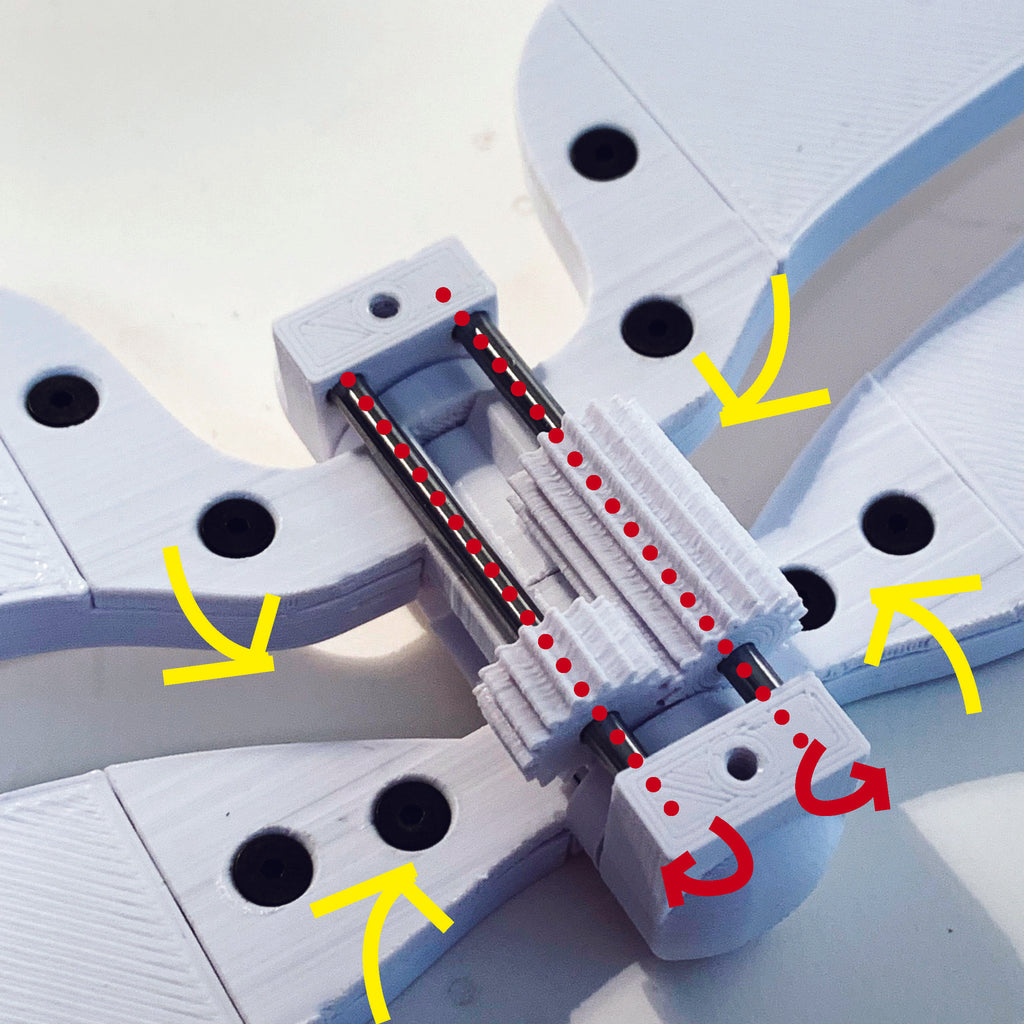
STEaM is an approach to education which integrates Science, Technology, Engineering, the Arts and Mathematics for guiding a student's inquiry, dialogue, and critical thinking. The process is for a student to engage in observation, questioning, self-guided discovery, problem-solving, and synthesis into a creative process.
Although STEaM is generally a curriculum within a classroom, we believe that toys at home can promote this type of education without having to be a formal teaching instrument.
Tectonic Toys are a fun way to promote education and discovery surrounding different engineering systems, each allowing multiple levels of questioning, engagement and discovery.
The Tectonic Toy Grasshopper illustrates the versatility of the parallelogram for controlling motion and stability with its kicking legs.

The Tectonic Toy Dragonfly illustrates the transfer of force through rotation and gears with its alternating pivoting wing sets.

The Tectonic Toy Bee illustrates compounded structural connections, and force vectors with its sliding actuated rotating wings.

Each toy has systems and parts which are exaggerated and exposed to facilitate discovery related to the question: "How does this work?"
Then broken into the more specific questions:
Question: How are these legs kicking so far, and how are they moving together so well?

Observation: Movement of the legs always results with the upper and lower muscles staying parallel, and conversely, the forward and rear legs staying parallel.


Discovery: If either pair of leg components weren't parallel, the motion wouldn't be predictable, or the system would bind up so that the legs can’t move. But because the system is a parallelogram it allows a range of predictable movement.
Synthesis: Parallelogram mechanisms can be found in many products, including automobile steering, automobile suspension assemblies, and scissor lifts. What ways can parallelograms be used for products to function?
Question: How does moving just one wing makes three other wings move in opposite directions?

Observation: The four gears in the abdomen and the wings are fastened to two separate pivoting components which are arranged around a central shaft.

Discovery: The lower left gear moves clockwise in order to move the lower right gear counterclockwise (or vice-versa). This reversal of motion allows alternate flapping between the left and right wings, as well as the front and back wings. Additionally, the rotational motion bypasses the motion of the rear assembly. The bypassed motion is achieved by concentric components which interlock around each other without restricting the others rotational motion.
Synthesis: The dragonfly gears work the same way as gears within a watch, or clock to transfer motion. What other ways can gears be used to make products work?


Question: How are the wings swinging upwards and towards each other when the abdomen is moved in a linear motion?
Observation: There are multiple components working together, but each component has a different direction of movement.

Discovery: Force vectors are a measure of force and the direction associated with it. Vectors can be broken into three spatial dimensions: X (left and right), Y (forward and backwards) and Z (up and down). The bee utilizes different types of structural connections directly related to each vector. The long bolt through the abdomen (slider connection) restricts motion of the abdomen to only the y-axis only. The upper/forward pair of bolts (pin connections) provides pivot points for the wings. The lower bolts (rigid connections) protrude into a channel in the bottom of the wing which creates a path to change the direction of force by separating out one component of force.


Another discovery is about torque, which is force applied perpendicular to the radius from an axis. The x component of the force vector in the thorax applies torque on the wings, and causing them to rotate.


Synthesis: Rigid connections, pin connections, and slider connections are everywhere around us. How could these different types of connections be used for other purposes?
The toys are built with cues implying that a deeper understanding is also readily available by taking the toys apart, then re-assembling them.
Read about a macro photographic exploration of bugs
To read more about educational projects you can do with your child see our recent blog post about building your own toys.
To read more about the design inspiration for our Tectonic Bison
For More about STEaM Education